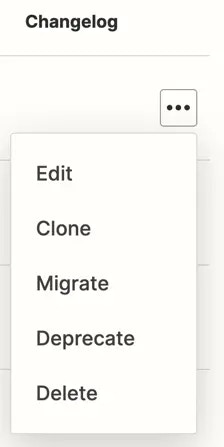What’s the difference between minor and major changes?
Minor changes allow Zaps to continue to work as normal. Minor changes need to be compatible with both the previous and new version. When migrating users to a new version, only active Zaps (not draft) are migrated. In some cases, after migration, users that have drafts with an older version of the app may edit that draft and publish the draft, thereby publishing a Zap with an older version of the app. Zapier recommends migrating a small portion of your existing users to the new integration version to make sure everything is working as expected. Monitor the logs in the Monitoring tab, and migrate the remainder of your users to the new version when ready. Major changes would cause active Zaps to error and potentially turn off. They would require users to manually update the Zap in order to get it working again. Learn more about breaking changes to your integration, best practices and the user impacts. Zapier recommends not to attempt to migrate users for major changes. Migration is not required unless the older version will no longer function. If necessary, you can deprecate the version to prompt users to manually update to the latest integration version. Please note that deprecating a version is significantly more disruptive to our mutual users than migrating to the latest promoted version, or than leaving users on an older (now) private version when migration is not possible. When users are left on an older private version, they will see a prompt in the Zap editor to encourage them to make the update themselves.Migrate users to new version with Platform UI
In the Platform UI:- In the Manage section in the left sidebar, click your Versions.
- On your existing version, click the three dots icon

- Click Migrate
- The Versioning sidebar will appear on the right hand side. You’ll need to specify:
- From Version. Select which version
- To Version. Select the new version you wish to migrate new users too.
- Note: Labeled versions, i.e.
1.0.0-beta, are not eligible for migration and will not show in either dropdown.
- In the Which users(s) to migrate field, select either:
- By percentage. This will allow you to migrate users, based on percentage between 5% to 100%. This cautious approach helps ensure that minor updates haven’t inadvertently caused any issues.
- Select a percentage
- Click Migrate.
- By email. To migrate users one at a time, by email. When you select this option, you’ll see a toggle that controls the scope of the migration:
- Individual: (Default) Only the user’s private Zaps under the user’s individual account will be migrated. Zaps that are shared across the team, shared app connections, or in a team/enterprise account will not be migrated.
- Organization: Both private Zaps under the user’s individual account and Zaps shared across the user’s organization accounts will be migrated. ⚠️ Use with caution as this can break shared Zaps for other users.
- In the Email field, add the user’s email address attached to their Zapier account.
- Click Migrate.
- By percentage. This will allow you to migrate users, based on percentage between 5% to 100%. This cautious approach helps ensure that minor updates haven’t inadvertently caused any issues.
- The Versioning sidebar will update to show Update status:Estimating. Once the migration has been completed, the Versioning sidebar will disappear.
Migrate users to new version with Platform CLI
For Platform CLI users, it’s possible to perform full or partial migrations using thezapier-platform migrate command (or the deprecated zapier migrate command). See the CLI documentation for more details.
Examples
Need help? Tell us about your problem and we’ll connect you with the right resource or contact support.